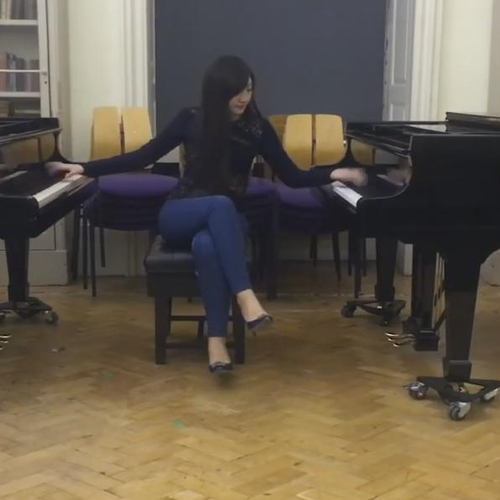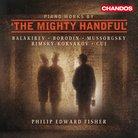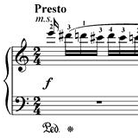Rimsky-Korsakov - Scheherazade: An exhilarating journey of love, intrigue and adventure
The composer's early life as a sailor informed his evocative music for Sinbad and other tales from the Arabian Nights.
I want to tell you a story…but there’s more to this tale than words! It’s a story which takes shape through one of the most colourful, evocative and descriptive scores in all classical music, guaranteed to capture the imagination of everyone who hears it, young or old.
Rimsky Korsakov’s Scheherazade is itself a story about a storyteller – one of the greatest of all, who inspired this exotic music. Although the composer himself was in two minds about how far he should stick to the stories of the Persian Princess, his preface at the top of the score sets out the bare bones of the 45 minutes of music which follow:
'The Sultan Shahriar, convinced of the duplicity and infidelity of all women, vowed to slay each of his wives after the first night. The Sultana Scheherazade, however, saved her life by the expedient of recounting to the Sultan a succession of tales over a period of one thousand and one nights. Overcome by curiosity, the monarch postponed the execution of his wife from day to day, and ended by renouncing his sanguinary resolution altogether.'
Immediately, the music does its job of introducing the two main characters with their own specific themes. There’s no doubting the Sultan – his arrival is announced with the very first uncompromising notes - a bold, brash theme answered by the mesmerising solo violin. Within the opening minute we’ve met the pair who are at the centre of these tales of love, intrigue and adventure. It’s as though the composer himself was captured by their spell. When he sat down to write his orchestral fantasy his inclination was to use the more conventional terms for each of the four movements – Prelude, Ballade, Adagio and Finale. He was definitely against using titles which would define or constrict his music, but ultimately, the nature of each story is revealed by his music. In his memoirs, Rimsky-Korsakov makes his intentions even clearer: “All I had desired was that the listener, if he liked my piece as symphonic music, should carry away the impression that it is beyond doubt an Oriental narrative of some numerous and varied fairy-tale wonders and not merely four pieces played one after another.'
So now we have the characters in place and the musical motivation, what of the stories themselves? With a thousand and one tales to choose from, Rimsky-Korsakov begins with 'The Sea and Sinbad’s Ship' – perhaps a reflection on the composer’s earlier career in the navy when the young officer sailed the Atlantic, the Mediterranean, and those routes bound for the exotic east, discovering both the perils and the excitement of a voyage at sea. Aboard Sinbad’s Ship all is well, as the orchestral waves gently rock us on our way with time to watch sea birds flying towards the horizon, the story’s journey has begun.
'The Tale of the Kalendar Prince' is the second story, begun by Scheherazade as her violin theme opens the second movement. This is the first time that Rimsky-Korsakov leaves us in no doubt that we’re heading east, with exotic solos for the woodwind instruments there’s a real sense of the mystery of the Orient. It’s a little less certain which of the three Kalendar Princes who appear in the original tales is the subject here, and suddenly it’s clear why Rimsky-Korsakov didn’t want to be wholly bound by the ancient tales, since he obviously had some ideas of his own!
There’s such a tender opening to the third movement, you’re in no doubt that this is a love story featuring the 'Young Prince and the Young Princess'. It’s no less effective than the orchestral fanfares and imaginative passages of the earlier movements, but we are drawn into their love affair with some of the loveliest, sensual music of the entire work, making it an unsurprising favourite amongst these pieces.
Then it’s back to the action for the finale, and you can hear the Sultan’s impatience for the story to continue. We’re back on board ship, but the calm of the opening movement is forgotten amidst the turbulence of the waves and the encroaching storm. This story is an adventure packed thriller – culminating in the crashing waves and the destruction of the ship, breaking up on the cliffs. The shipwreck coincides with the end of the Sultan’s deadly intent to kill each of his wives, his musical theme banished and replaced with a clever tying together of the earlier themes, as Scheherazade herself reminds us of the stories she’s told. It’s her melody which returns for the concluding moments of this outrageous fantasy, and her triumph over her wicked husband is finally and sweetly acknowledged.
These ancient folk tales have inspired poets and writers, artists and composers for centuries but the immediate impact of this so called 'narrative in sound' from Rimsky-Korsakov has the potential to transport you to a fairy tale world with such forceful emotion, its an exhilarating journey.












